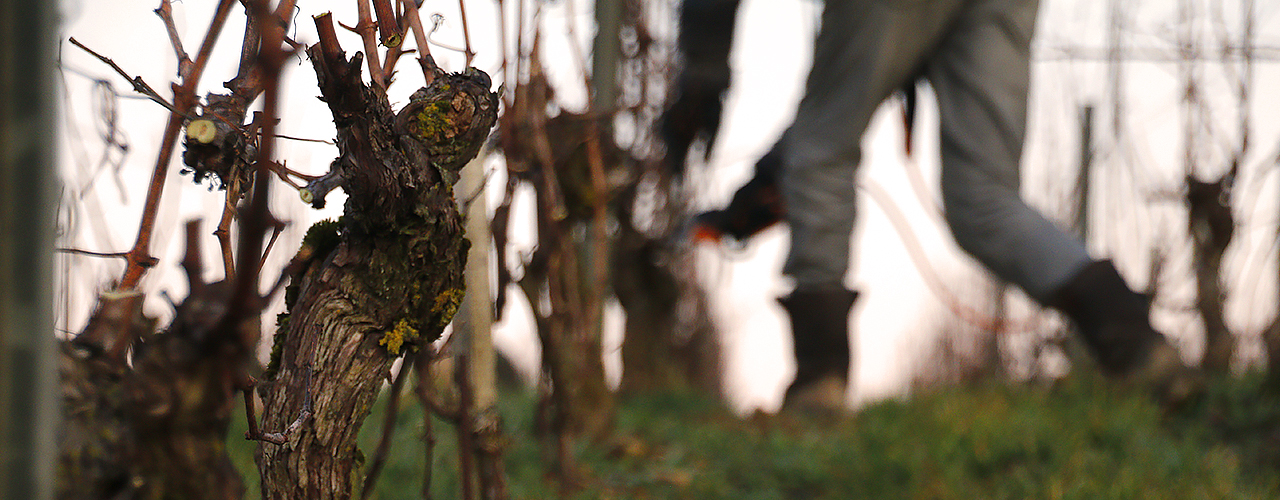
Pruning is one of the most time-consuming tasks for a winegrower. It begins after the leaves fall, at the start of the vine’s winter rest period, and usually continues from December through until March.
Pruning consists of cutting away certain vine shoots to regulate the vines’ future production. The winegrower must wait for the sap to descend into the roots and build reserves for the “bud burst” the following year (bud burst is the first stage in the vine’s growing cycle. This is when the buds develop and reveal the villi referred to as “bourre” or cotton).
In our Centre-Loire vineyards, we use the Guyot Poussard pruning system which consists of shaping each vine into two arms: one arm with a long cane and a spur (two buds), and then a second arm with just one spur. This is a gentle form of pruning and encourages the sap flow. It also helps to reduce wood diseases and vine mortality.
Pruning is a particularly important task as this is what determines the structure of the vine and has a direct impact on the “yield” (the quantity of grapes harvested across a specific surface area of vines).
The challenge for the winegrower is to ensure sufficient yet not excessive production as this could “tire” the vine and accelerate its ageing.
The cane and spurs will support all of the wood and grapes that will grow during the year. They must therefore be chosen carefully to ensure that the weight is evenly distributed on the vine and that there is a microclimate conducive to the ripening of the grapes.
This is a crucial stage in our vineyard staff’s work owing to its direct impact on the quantity and quality of the future harvest.


